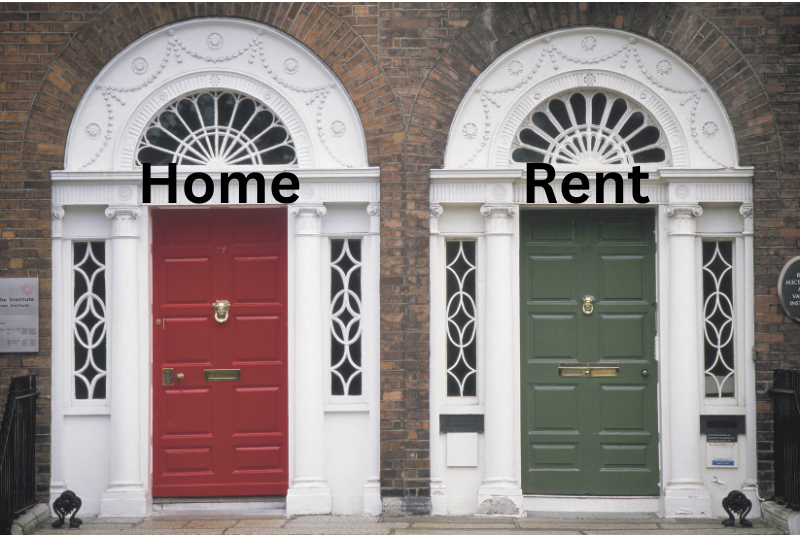Real estate investing has long been a cornerstone of investment portfolios, offering stability, appreciation, and…
Property Flipping: How to Avoid Pitfalls and Ensure Smooth Transactions
Property flipping can be a highly lucrative venture, but only if you know the essentials to avoid common pitfalls and ensure your transactions go as smoothly as possible.
Welcome back, Future Property Moguls! On our channel, we share the best tips and tricks for flipping properties successfully. Whether you’re a newcomer or a seasoned investor, this guide will provide valuable insights to help you navigate the complex world of property flipping. So, let’s dive into the strategies that will help you master this real estate investment approach!
What is a Legitimate Property Flip?
Understanding what constitutes a legitimate property flip is the foundation of a successful real estate venture. A legitimate property flip typically involves acquiring properties below market value and selling them for a profit. Here are the types of legitimate property flips:
- Sales of properties by Fannie Mae, Freddie Mac, HUD, government entities, or banks: These sales are often seen as legitimate because they involve properties sold by reputable institutions.
- Relocation company sales: Properties sold due to relocation needs often present great opportunities for flippers.
- Estate or divorce sales: These sales can offer properties at discounted prices, making them ideal for flipping.
- Renovated property sales: Acquiring properties in need of renovation, refurbishing them, and then selling for a profit.
Essentially, the goal is to buy low and sell high, but it’s not as simple as it sounds. There are several hurdles and potential pitfalls that can disrupt the process.
Red Flags That Could Stop Your Closing
Being aware of the red flags that can derail a property flip transaction is crucial for any investor. Here are some common issues that could stop your closing:
- Unsubstantiated Renovations: If renovations aren’t performed or documented properly, it can appear suspicious to buyers or lenders. Ensure all upgrades are clearly substantiated with paperwork and photos.
- Contracts Where the Seller Isn’t the Owner of Record: This is a huge no-no. Always verify that the person selling the property is the rightful owner.
- Undisclosed Back-to-Back Closings: When multiple transactions occur simultaneously without proper disclosure, it can raise red flags. Ensure that all dealings are transparent.
- Secondary Financing Issues: Using secondary financing that isn’t disclosed can halt the closing process. Always be upfront about all financing involved in the transaction.
Best Practices for a Smooth Property Flip
To avoid these red flags and ensure a smooth transaction process, follow these best practices:
1. Document Property History
Always keep a record of the property’s sales history, especially if it was a distressed sale. Having thorough documentation can provide evidence of the property’s legitimacy and help prevent any delays.
2. Document Renovations Thoroughly
Keep all copies of invoices, before-and-after photos, and building permits for any improvements made. This documentation serves as proof that genuine upgrades have been made, which is crucial in convincing potential buyers and lenders of the property’s value.
3. Conduct a Title Update for All New Listings
Ensure the seller is the owner of record by conducting a title update. This prevents any disputes over ownership that could jeopardize the deal.
4. Accept Straightforward Contracts
Complex contracts can create unnecessary complications. Opt for simple and straightforward contracts to prevent suspicion and misunderstandings.
Following these steps not only ensures compliance with federal rules and regulations but also builds trust with your buyers and lenders. Remember, transparency is key!
Why Compliance Matters in Property Flipping
The real estate flipping business is heavily regulated by federal, state, and local authorities. Being compliant with these rules and regulations is crucial for a successful property flip. Here’s why:
- Avoid Legal Trouble: Non-compliance can lead to fines, legal disputes, or even the cancellation of transactions.
- Build Trust with Buyers and Lenders: Clear and transparent transactions create trust, which is essential for long-term success in real estate.
- Ensure Smooth Transactions: Adhering to rules and regulations helps in avoiding any last-minute surprises that could derail a deal.
Common Pitfalls to Avoid in Property Flipping
While property flipping can be lucrative, it’s not without its risks. Here are some common pitfalls to avoid:
- Overpaying for the Property: Always ensure you’re buying below market value. Overpaying can drastically cut into your profit margins.
- Underestimating Renovation Costs: It’s easy to miscalculate the cost of repairs. Always have a buffer for unexpected expenses.
- Ignoring Market Trends: Flipping in a declining market can be risky. Stay informed about the latest market trends and adjust your strategy accordingly.
- Lack of Proper Planning: Successful flipping requires meticulous planning. From acquiring the property to selling it, each step should be carefully planned and executed.
Final Thoughts
Property flipping can be a highly rewarding venture if done correctly. By following the best practices outlined above, you can minimize risks and maximize profits. Remember, the key to successful flipping is not just about buying low and selling high but also ensuring that every transaction is smooth, transparent, and compliant with all regulations.
The information provided here is based on rules and regulations issued by federal agencies, interpreted in an easy-to-understand manner. However, always check with your local and state authorities to ensure you meet all requirements and disclosures.
If you found this article helpful, please share it with others who might benefit from it. And if you have any questions or need personalized guidance, don’t hesitate to book an appointment with my team. We’re here to help you succeed in your property flipping journey!
Frequently Asked Questions (FAQ) About Property Flipping
1. What is property flipping?
Property flipping involves purchasing properties below market value, making improvements (if necessary), and selling them for a profit. The goal is to buy low and sell high, often through renovation, market timing, or other strategic maneuvers.
2. What constitutes a legitimate property flip?
A legitimate property flip typically includes the following types of sales:
- Properties sold by Fannie Mae, Freddie Mac, HUD, government entities, or banks.
- Relocation company sales.
- Estate or divorce sales.
- Renovated property sales.
These transactions are considered legitimate as they involve reputable institutions or scenarios that offer properties at potentially lower prices.
3. What are some red flags that could stop a property flipping transaction from closing?
Several issues can disrupt a closing, including:
- Unsubstantiated renovations without proper documentation.
- Contracts where the seller is not the owner of record.
- Undisclosed back-to-back closings.
- Secondary financing issues that aren’t properly disclosed.
Ensuring transparency and thorough documentation can help avoid these red flags.
4. How can I ensure a smooth transaction when flipping a property?
To ensure smooth transactions, follow these best practices:
- Document the property’s sales history, especially if it was a distressed sale.
- Keep detailed records of all renovations, including invoices, photos, and permits.
- Conduct a title update to confirm the seller is the owner of record.
- Use straightforward contracts to minimize complications and suspicion.
5. Why is it important to comply with federal, state, and local regulations in property flipping?
Compliance is crucial because it helps avoid legal troubles, builds trust with buyers and lenders, and ensures smooth transactions. Non-compliance can lead to fines, legal disputes, and even deal cancellations.
6. What are the common pitfalls to avoid in property flipping?
Common pitfalls include:
- Overpaying for a property, which reduces profit margins.
- Underestimating renovation costs, leading to unexpected expenses.
- Ignoring market trends, which can impact the profitability of a flip.
- Failing to plan properly for each step of the process, from acquisition to sale.
7. How do I document renovations properly for a property flip?
To document renovations, keep copies of all invoices, before-and-after photos, and any relevant building permits. This serves as proof of improvements and helps build trust with potential buyers and lenders.
8. How do back-to-back closings affect property flipping?
Back-to-back closings, where multiple transactions happen simultaneously, can raise suspicions if they are not properly disclosed. To avoid any issues, ensure all parties involved are aware of these transactions and that they are fully documented.
9. What should I do if I have questions or need personalized advice on property flipping?
If you have specific questions or need personalized guidance, it is best to consult with a professional. You can book an appointment with a real estate expert or a member of our team using the link provided in the description of our content.
10. How can I stay updated on the latest property flipping tips and trends?
Subscribe to our channel, follow our blog, and engage with our community to stay informed about the latest tips, trends, and strategies in property flipping and real estate investing.
Feel free to reach out with any additional questions or concerns. We’re here to help you succeed in your property flipping journey!




